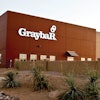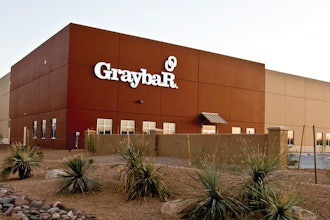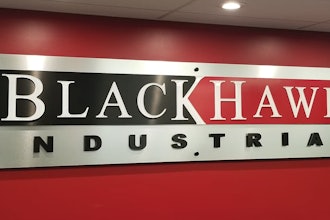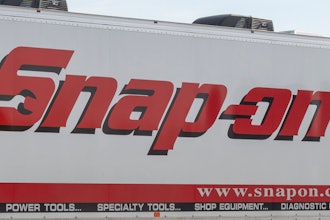
Historically, manufacturers and distributors of industrial assets have viewed their responsibilities as beginning and ending with building the best products they could and delivering them to buyers. But as competition increases, asset manufacturers/distributors must do much more than simply sell products. To keep a steady revenue stream and win new business, they must also provide ongoing, reliable services that deepen and extend the relationships they have with their customers.
This approach is known as “servitization.” Put simply, servitization is the act of applying a service to a product in order to create additional value. A company may offer its customers a contract that covers the cost of ongoing maintenance and repairs over a period of time, for example. It is somewhat like a standard warranty, though with a certain “white glove” aspect that provides customers with the peace of mind that they will not have to worry about the assets they purchase not meeting expectations.
However, organizations that truly invest in servitization offer even more value — and get a lot more in return — than those that do the bare minimum. A company committed to servitization is one that is dedicated to giving its customers maximum utility, flexibility and lifetime returns on their investment. These are the OEMs that sell an asset with the promise that the asset will run hot for 60 hours a week, or maintain 97 percent uptime under certain specifications. They do everything they can to make sure that promise is kept, and that their customers achieve “power by the hour.”
Balancing trust with profitability
A servitization approach benefits both the customer and the manufacturer/distributor. It builds trust and makes it more likely that the customer will continue to buy from the manufacturer/distributor — both new products and replacement parts and upgrades on existing purchases — creating sustainable revenue streams with the potential for growth. Simultaneously, the customer is assured that the item they are purchasing will be well maintained and run as expected, for as long as expected, even if that means paying an incremental amount for service. Like someone paying a monthly health insurance premium, the customer will have peace of mind that if something goes wrong, the manufacturer/distributor will take care of the problem. It is something that many plant operators, whose facilities demand near continuous uptime, are willing to invest in.
Of course, equipment manufacturers/distributors must take care not to cut into their own profits, which requires minimizing the amount of time and effort spent on repairing their assets. The mere process of identifying the cause of a problem and coordinating among different service teams can lead to enormous amounts of downtime, which can easily wipe out whatever revenue is gained from service income. Therefore, manufacturers and distributors must ensure that repairs are kept to a minimum. However, if repairs are required, manufacturers/distributors and other members of their service teams must be able to identify, react to and repair problems quickly to honor the guidelines of their service contracts and sustain a power by the hour model.
Building a servitization infrastructure
Successfully moving from selling an asset and calling it a day to providing an ongoing service requires an infrastructure that allows equipment manufacturers and distributors to collect, share and understand data relevant to the everyday operation of their assets. They need to be able to use all of the different types of data they are collecting, in all of its forms and from various sources, to proactively remove friction (both between them and their customers and amongst disparate service teams), improve repair and maintenance processes, select the right tools for the job and quickly determine the root cause of failures to expedite repair processes and maintain uptime.
While connected sensors may provide a raft of raw data, that information is generally without context and delivered in unconnected bits and bytes. A plant manager may receive an alert that a piece of equipment has overheated, for example, but they may not have the necessary information to diagnose the true problem or map out a repair plan. However, teams need to understand which pieces of data matter, and how those pieces fit into the overall service and maintenance process. This requires eschewing the standard practice of relying on basic, one-off IoT data and moving toward collecting data from numerous sources, which can help provide context to the information.
To compound the challenge, data is often stored or captured in various silos or in different parts of a single service ecosystem. Indeed, an asset manufacturer/distributor might be reliant upon nine or 10 different enterprise applications that they have accrued over time, all operating independently with one another. The call center team uses one piece of software, distributors use their own ERP systems, customers rely on their own asset management systems and repair specialists manage their own tools and processes.
To enhance the service maintenance and repair process, manufacturers should implement a framework that brings all available data sources together. They must connect information derived from telematics and diagnostic sources, service repair systems, call center applications, and more, to create a complete picture of an asset’s components, schematics, service history and other relevant information that can be used to improve maintenance and repair operations. Overlaying the key data points from the various sources provides context behind the data, allowing members of the service team to map out effective plans to keep assets running.
The four C’s
This framework can also provide the glue that binds separate teams and individuals together and help manufacturers achieve the four C’s — collaboration, control, connectivity and consistency — that define a stellar servitization model. Manufacturers will be able to more easily and effectively collaborate and with their customers, notifying them of scheduled maintenance times, sharing information transparently throughout the repair process and so forth. Better connectivity between teams can help expedite repairs and mitigate downtime. With the right data at hand, manufacturers will also gain better control over the maintenance and repair of their assets, leading to more consistent, better overall performance, with the same service calls, procedures and order fulfillment being performed on a predictable schedule.
 Dick Hyatt, President and CEO of Decisiv
Dick Hyatt, President and CEO of DecisivWhile the servitization model remains somewhat of a bright, shiny object for North American-based manufacturers, domestic companies can look to the success of their European brethren. Servitization has been very prevalent across the pond over the past few years, and many organizations have used it to successfully deliver new revenue streams and develop better customer relationships. In fact, over one third of the assets sold in Europe come with some sort of enhanced service level contract. These companies have effectively made their customers their partners. In return for their customers’ business, they have promised to keep their equipment running, no questions asked. In a sense, they have tied themselves directly to their customers’ businesses, effectively saying “your success depends on our success — and vice-versa.” They have made a commitment to their customers. If they fulfill that commitment successfully, the chances are very good that those customers will return the favor when the time comes to make another purchase.
Dick Hyatt, president and CEO of Decisiv, has more than 25 years of experience building, managing and growing early stage technology companies, including SAGE Systems, Automation Partners, Hayes-Ligon (sold to ADP Dealer Services) and Amteva Technology (sold to Cisco Systems). Prior to his tenure at Decisiv, Mr. Hyatt was a Director of Marketing in Cisco’s Unified Communications business.






















